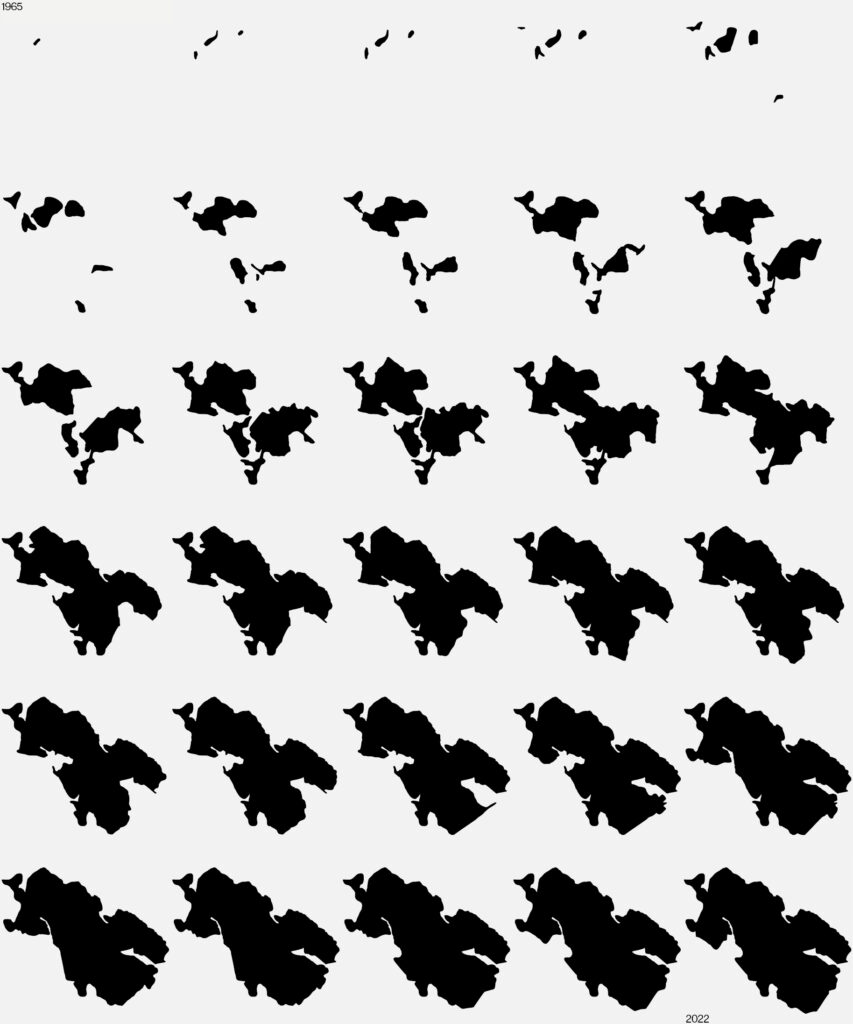66 YEARS
Until the Industrial Revolution, and as far back as prehistoric times, the usage of coal was limited, but with the invention of the steam engine, coal consumption accelerated drastically. In Greece, the most important phase of technological acceleration took place in the years 1962-73. To supply this rapid growth, the Greek government decided to begin the extraction of the lignite deposits of West Macedonia in 1956. The decision to transform the agricultural lands of Ptolemaida into an energetic hinterland has shaped the economic Fig. of the region. Mining operations escalated at a fast pace, deploying the local community in the power production industry and neglecting other economic activities. The lignite industry has been responsible for over 25% of the regional Gross Domestic Product, and more than 22,000 direct and indirect employment jobs. Covering most of the country’s electricity for decades, lignite production in Western Macedonia exceeded 55 million tons per year at the peak of the activity, making the region fully dependent on the role of being a production landscape.
The infrastructuralization has created a direct relationship between the volume of material excavated, the GDP and employment of the region, marginalizing other economic activities. Having no alternative that could balance out the jobs and income provided by the extraction, decreased production of lignite in recent years brings overall wealth loss to the region. The material results of millions of years of geological processes have been exhausted. Being one of the largest coal mines in Europe, Ptolemaida has become a hollow landscape. The mining operations extracted over 8.5 billion cubic meters of rocks and produced more than 1.7 billion tons of lignite. After 66 years, the landscape voids occupy over 17,000 ha and have turned forests and agricultural areas into a desert-like scenery.
In the context of underlying reasons for Western Macedonia becoming an energetic hinterland, the relatively short temporality of 66 years is directly interwoven with the Cenozoic period. Similarly, the temporality of 150 years helps to better understand the sudden, radical change the region has undergone, including the shifting of the populations and the Fig. of the landscape to strictly operational. 66 years produced a new type of territory, a new alteration of the hinterland, creating large social impacts, ecological costs, and sacrificing the landscape. It strengthened links between cities and non-cities, as well as established new connections, since industrial acceleration is not limited to city/non-city only, but involve non-city/non-city relations as well: an energetic hinterland also exists to supply other hinterlands, creating an array of dependencies, boosting profits, and accumulating capital. Supporting various sectors, e.g. agriculture, fishery, maritime, and industry, it increases the production output, allowing the establishment of more eurozone and worldwide connections. Being a part of the international energy grid, it thus ontributes to the profit maximization of the sector.

